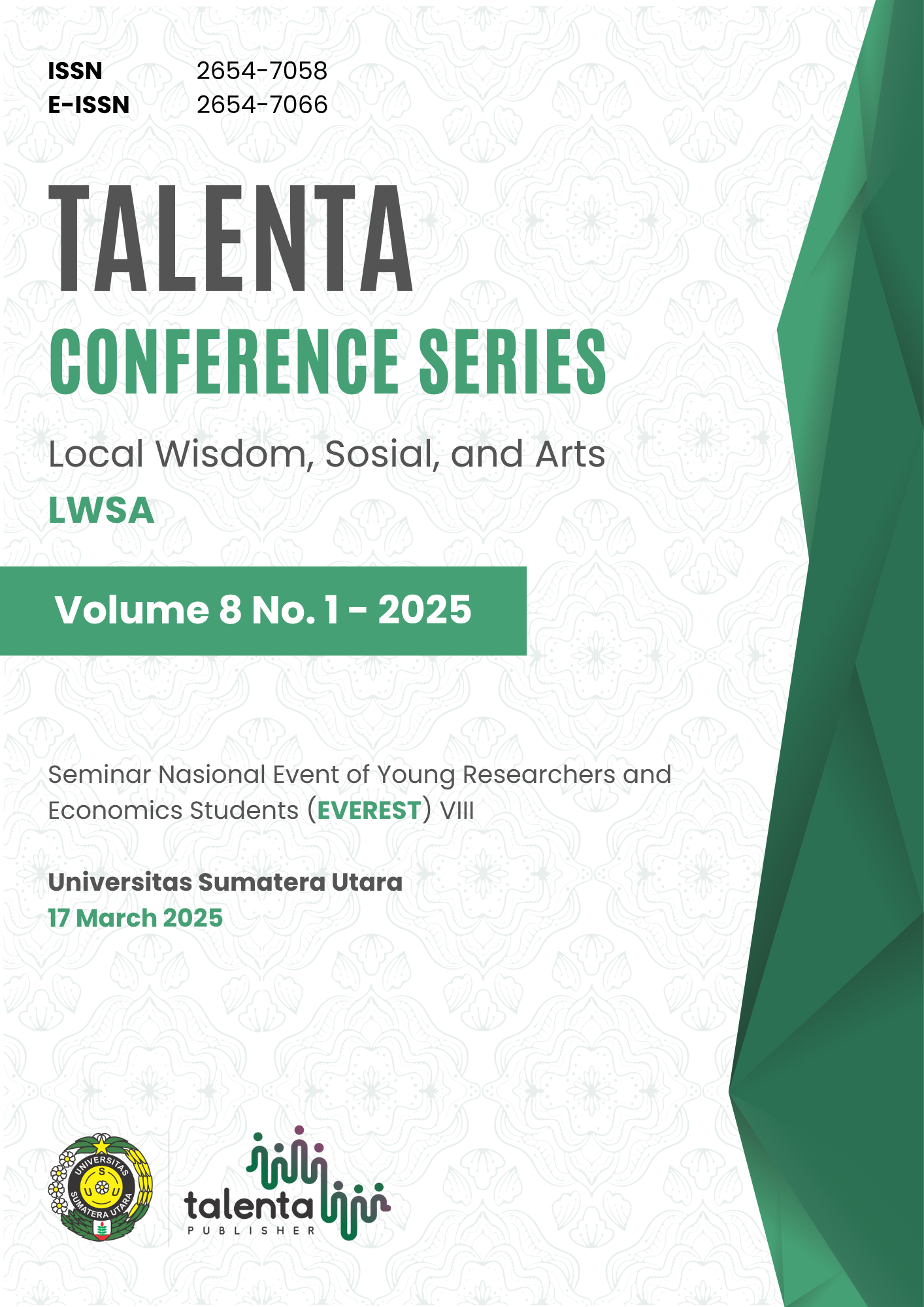Analysis Of Economic Growth Convergence Among Districts/Cities In North Sumatera
| Authors | ||
| Issue | Vol 8 No 1 (2025): Talenta Conference Series: Local Wisdom, Social, and Arts (LWSA) | |
| Section | Articles | |
| Section |
Copyright (c) 2025 Talenta Conference Series  This work is licensed under a Creative Commons Attribution-NonCommercial-NoDerivatives 4.0 International License. |
|
| Galley | ||
| DOI: | https://doi.org/10.32734/lwsa.v8i1.2384 | |
| Keywords: | Economic Growth Convergence Absolute Beta Convergence Conditional Beta Convergence | |
| Published | 2025-02-28 |
Abstract
Differences in economic growth, geographical conditions, and potential between regions cause development inequality. Therefore, there is a need for inter-regional convergence. The convergence will explain the equality of economic growth between regions. The concept of convergence occurs when areas with poor economies tend to grow faster than areas with a rich economy. North Sumatera Province has 33 district/cities with different economic characteristics and inequality. The purpose of this study was to determine the convergence in district/cities in North Sumatera based on the concept by Barro & Sala-i-Martin (2004) then the model spesification in answering research objectives are absolute beta convergence, and conditional beta convergence. This research was conducted using panel data regression analysis techniques. The result of this study confirms that there is existence of absolute beta convergence, and conditional beta convergence between district/cities in North Sumatera 2013-2022. The estimation results show that in terms absolute beta convergense, the convergence speed reaches 17,19 % and, conditional beta convergence reaches 27,88%. Conditional convergence have a higher speed than the absolute convergence. This indicates that the independent variable has a great influence in increasing the speed of convergence of economic growth in the district/cities in North Sumatera. In addition, there is a positive and significant correlation between length of study, and labor, but there is no significant relationship between roads, and regional income.






